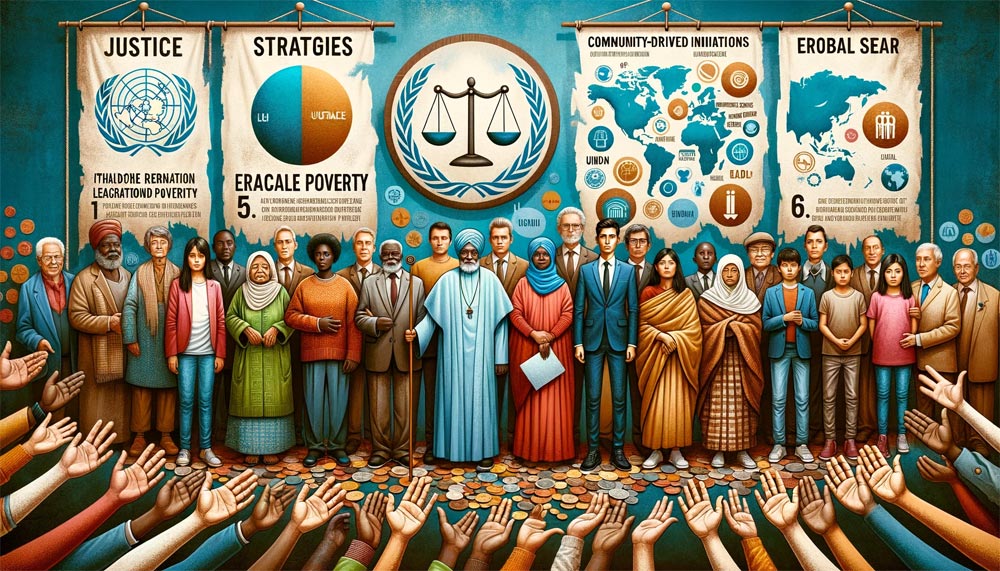
Understanding the International Day for Eradication of Poverty
The International Day for Eradication of Poverty, commonly referred to as "Poverty Day", is a global initiative to recognize and amplify the need to eliminate poverty worldwide. This day serves as a platform to engage global leaders, civil society, and the public in discussing and strategizing ways to end impoverishment. It traces its roots to October 17, 1987, when over 100,000 people gathered in Paris to honor victims of extreme poverty, violence, and hunger.
Historical Background of the International Day for Eradication of Poverty
The inception of the International Day for Eradication of Poverty is deeply rooted in a commitment to provide everyone an opportunity to lead a dignified life. The recognition of this day by the United Nations (UN) in 1992 was a crucial step in acknowledging poverty as a violation of human rights.
Quote:
"Poverty is not just a lack of money; it is not having the capability to realize one's full potential as a human being." - Amartya Sen, Nobel Laureate in Economics.
Statistics on Global Poverty: Current Numbers, Trends, and Impacts
- Global Numbers: An estimated 9% of the world's population lives in extreme poverty, surviving on less than $1.90 a day.
- Trends: While global poverty has significantly decreased over the last three decades, regional disparities persist, with Sub-Saharan Africa and South Asia accounting for the majority of the impoverished population.
- Impacts: Global poverty is multidimensional, impacting access to basic human needs like health, education, and sanitation, thereby limiting opportunities and potential for affected populations.
United Nations' Initiatives and Strategies in Combating Poverty
The UN has been pivotal in driving global poverty eradication efforts. A few notable UN Poverty Initiatives include:
- Millennium Development Goals (MDGs): Launched in 2000, the MDGs emphasized halving global poverty by 2015.
- Sustainable Development Goals (SDGs): Introduced in 2015, the SDGs focus on eliminating all forms of poverty by 2030.
- UNICEF: Works extensively in providing education, healthcare, and emergency services to impoverished children.
- UNDP: Focuses on inclusive growth and capacity-building to address poverty at its roots.
Case Study:
Bangladesh's Success: Embracing the MDGs, Bangladesh made remarkable progress in reducing poverty. Initiatives like micro-financing, women empowerment, and grassroots movements played pivotal roles in this success story.
The Role of Grassroots Movements and International Partnerships
Grassroots movements supporting poverty eradication have a distinct role to play. By working on the ground level, they understand the unique challenges faced by communities and can craft tailored solutions. International partnerships, on the other hand, amplify the reach and resources available to fight poverty.
- Local NGOs: They often engage in community development projects, vocational training, and micro-financing.
- International Collaborations: Organizations like the World Bank, International Monetary Fund (IMF), and non-profits partner to channelize resources, share expertise, and drive large-scale poverty eradication efforts.
Testimony:
"Working in rural Africa, I've witnessed how small-scale community projects, when backed by international funds and expertise, can transform entire villages." - Jane Smith, Social Worker and Activist.
Future Perspectives and Ongoing Challenges
While significant strides have been made, challenges in the fight against poverty persist:
- Economic Inequalities: Disparities in wealth distribution create barriers to accessing opportunities.
- Climate Change: Changing weather patterns disproportionately impact impoverished communities.
- Political Instabilities: Wars and civil unrest can reverse years of progress overnight.
For the vision of a poverty-free world to be realized, it's imperative that global efforts adapt to these evolving challenges.
Conclusion
The International Day for Eradication of Poverty isn't just a day. It's a call to action. For policy makers, NGOs, activists, and every concerned individual, this day serves as a poignant reminder of the collective responsibility to ensure every person's right to a life of dignity, opportunities, and freedom from the shackles of destitution.
Annual Day




